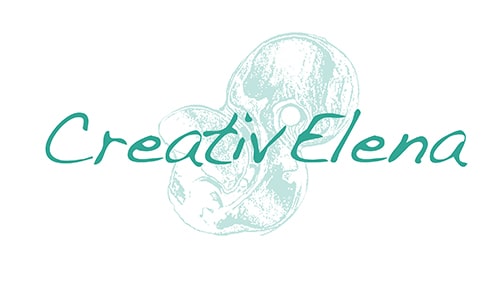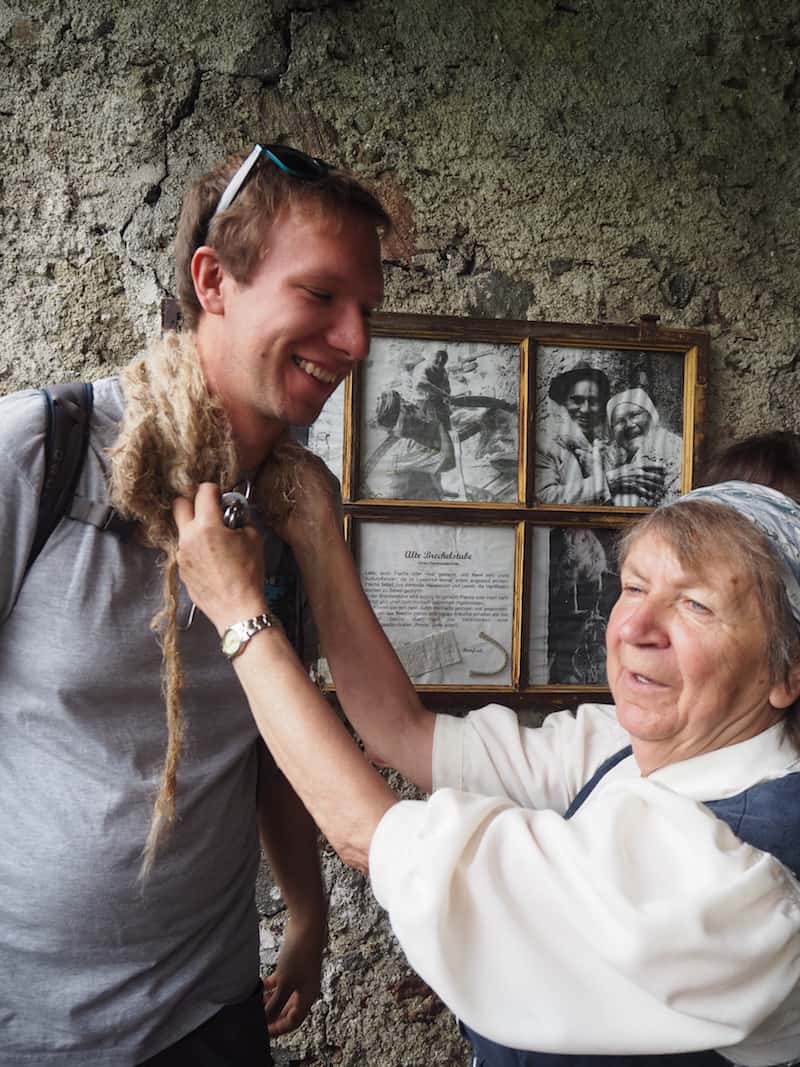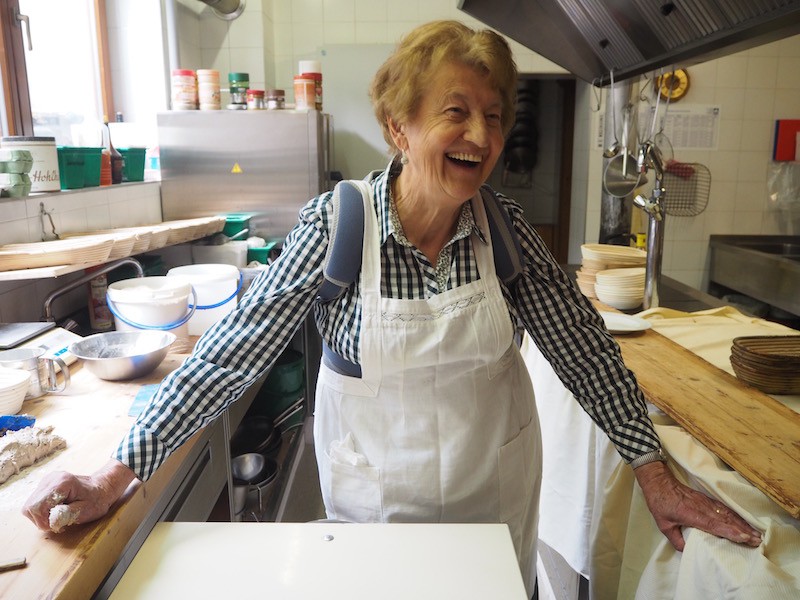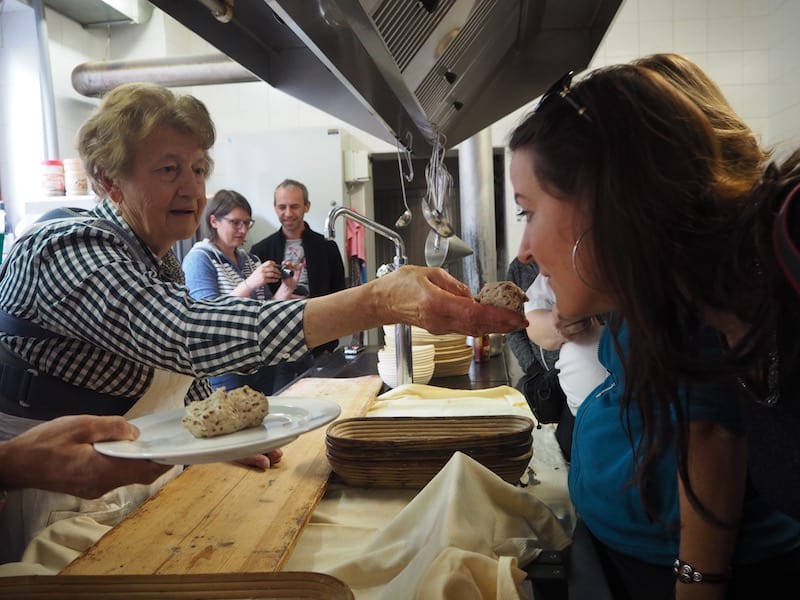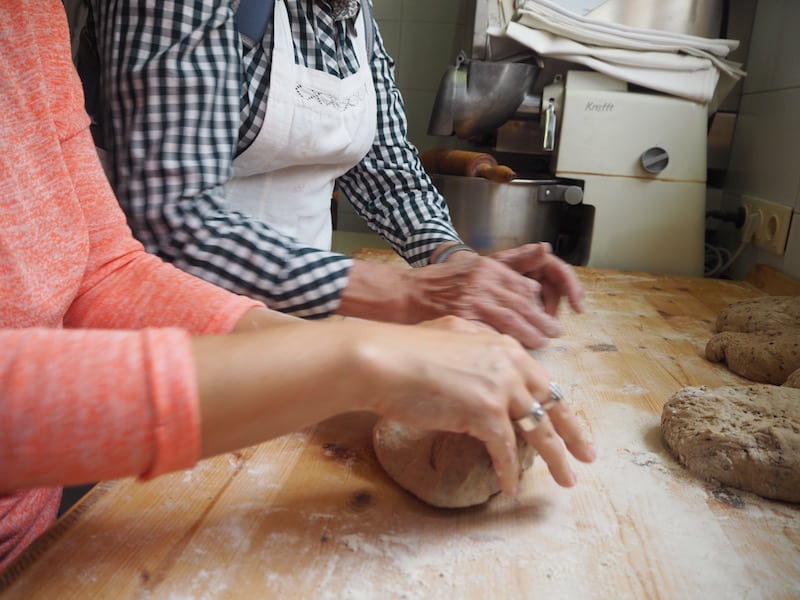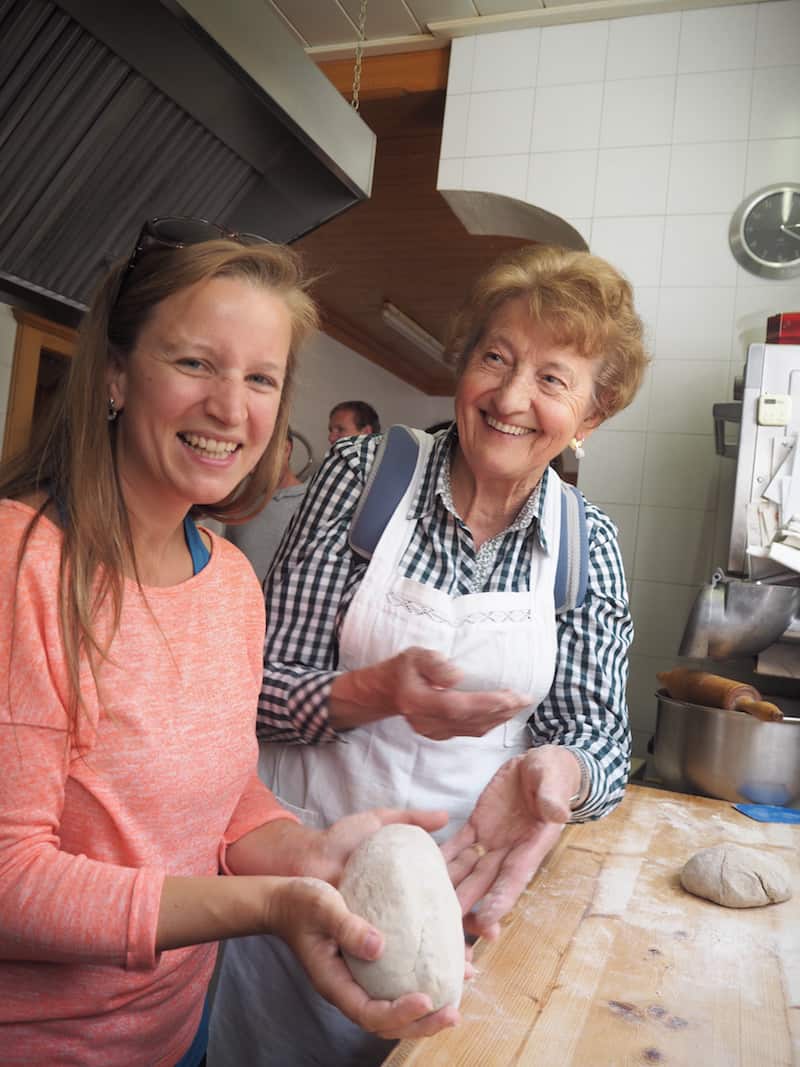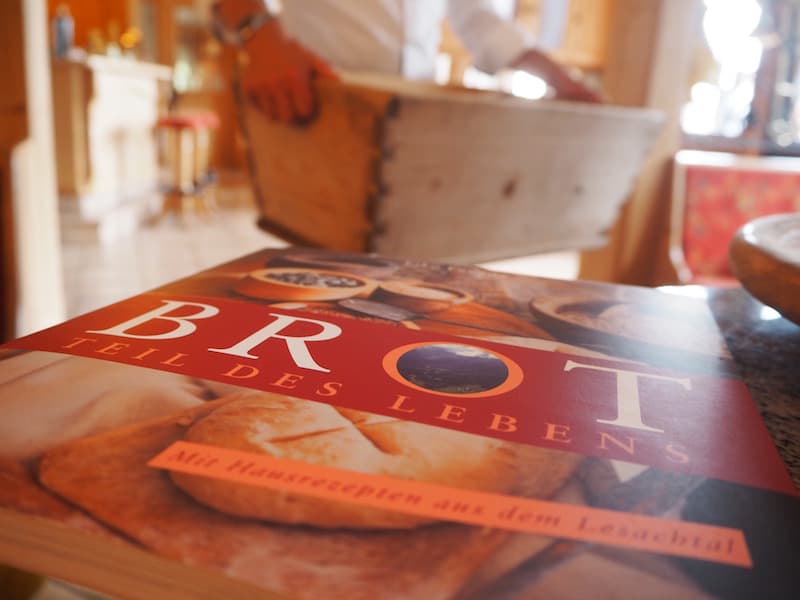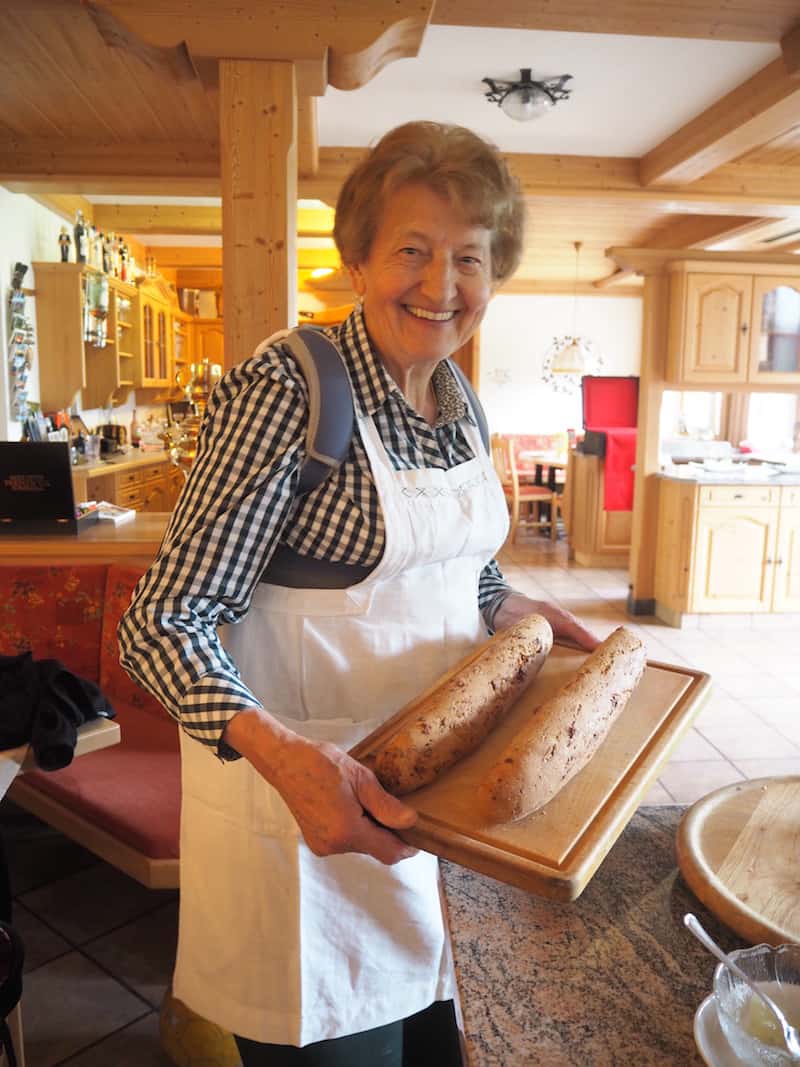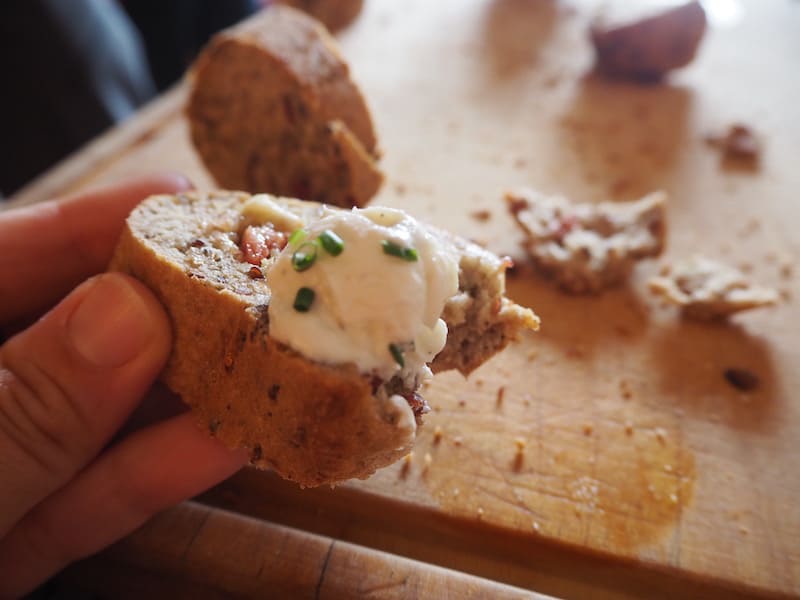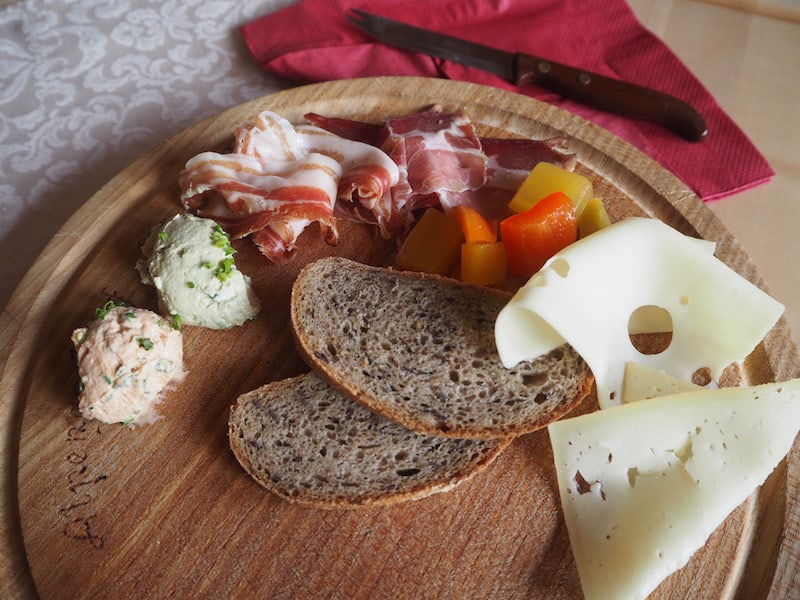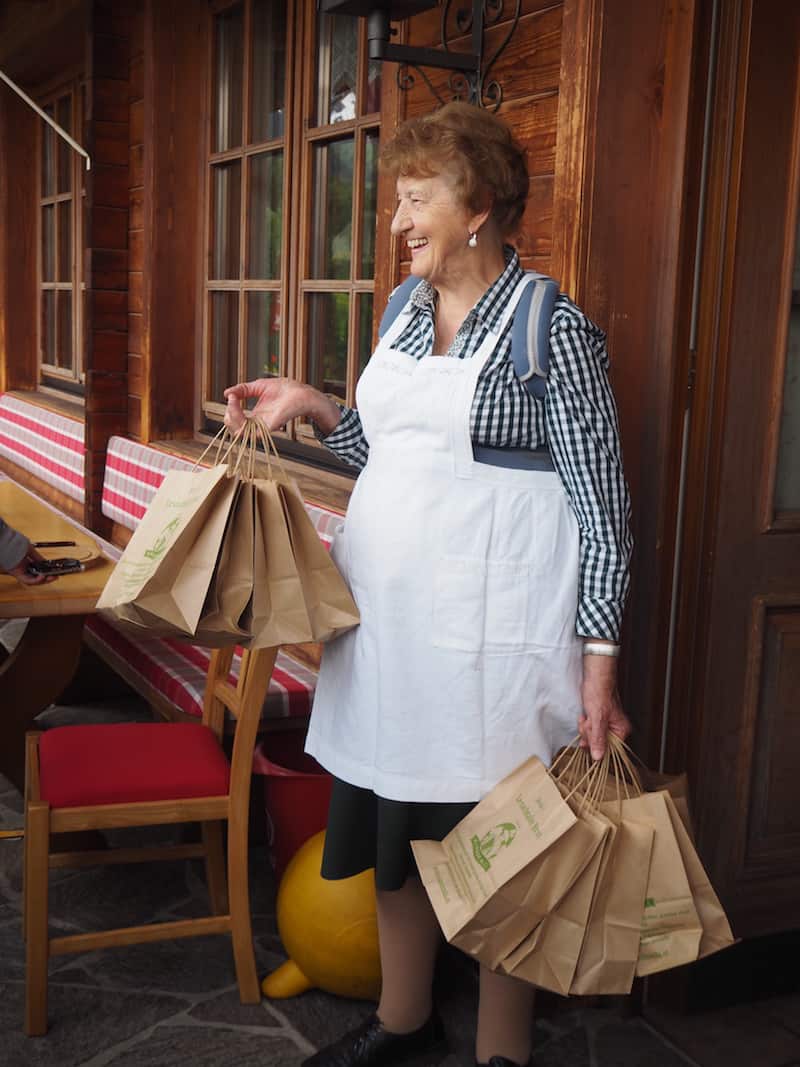“There is no straight line in the Lesachtal valley”, local Brigitte Luger tells us and smiles, her eyes beaming with delight. “I think it is what caused people here to remain innovative. After all, you just had to be, wanting to cultivate and survive on 1.000 metres of altitude and more.” Always a little different, always a little unique. And unpretentious. To this very day, simplicity is what makes up the pride of the Lesachtal people: Their bread, highly acclaimed by UNESCO as Intangible World Heritage? Made from simple sour dough in a special local baking technique. Their cables, wire ropes and water mills, already being advertised as innovative in a video dating from 1953? Based on simple techniques using local natural resources.
Theirs is a perpetual smile, here in the Lesachtal, proclaimed to be “the most original, natural valley of Europe”.
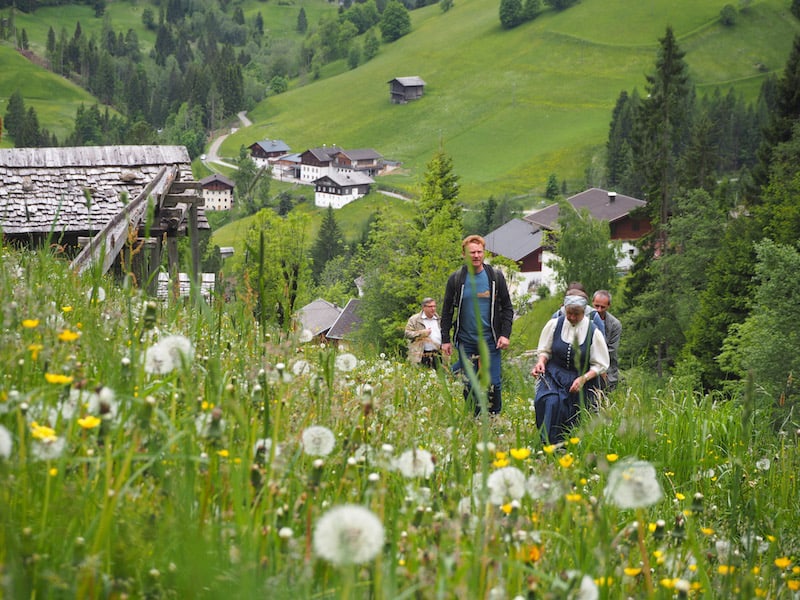
Looking upon the Lesachtal valley, you can easily spot their quieter pace and love for all things natural.
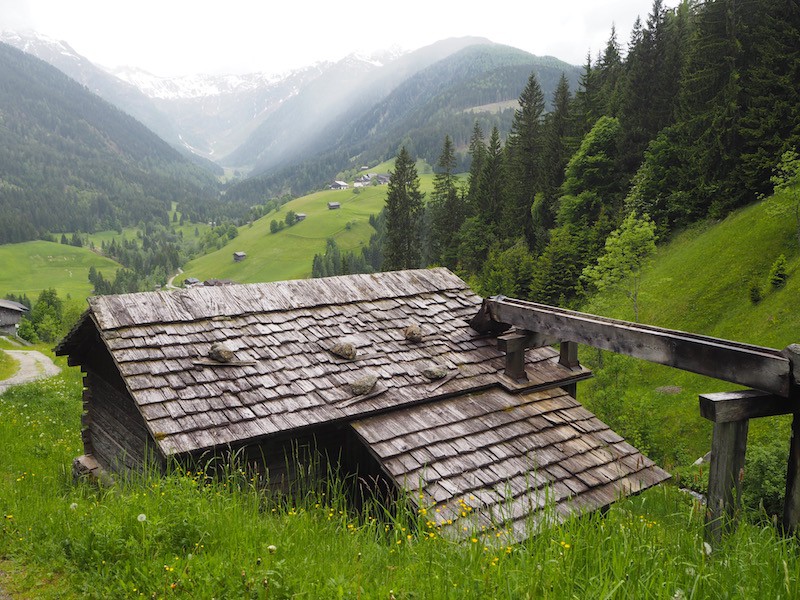
We have travelled here to explore the ingenious water mill system built hundreds of years ago, used to harvest energy in order to mill the cultivated corn.
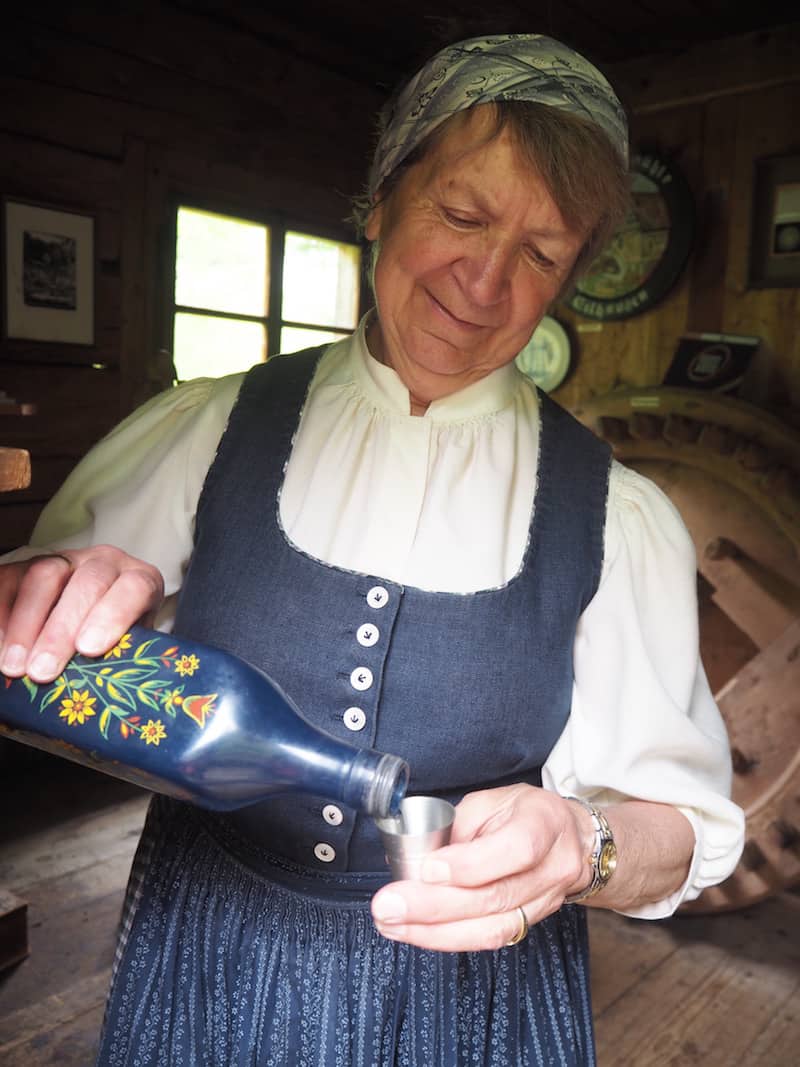
Arrive and revive, the slogan of the Austrian National Tourist Board in full swing! Wouldn’t you trust this charming local woman, Brigitte Luger?
Local know how, that’s what people in the Lesachtal were clever enough to develop and sustain. Brigitte Luger, too, fell for the local charm some 30 years ago: “I married the next best man here, that’s what!”
In between laughters, she tells us how she met and fell in love with her husband, Leopold Lugger. From the adjacent Gailtal valley, which you could easily mistake for “just another extension” of the Lesachtal valley, Brigitte arrived as a young teacher – and stayed. “Both valleys are different indeed”, she confirms. “I also had to learn this, mind you.” Local Lesachtal people even tend to consider themselves as the “Tyroleans of Carinthia”, emphasising early settlement history from places such as East or South Tyrol.
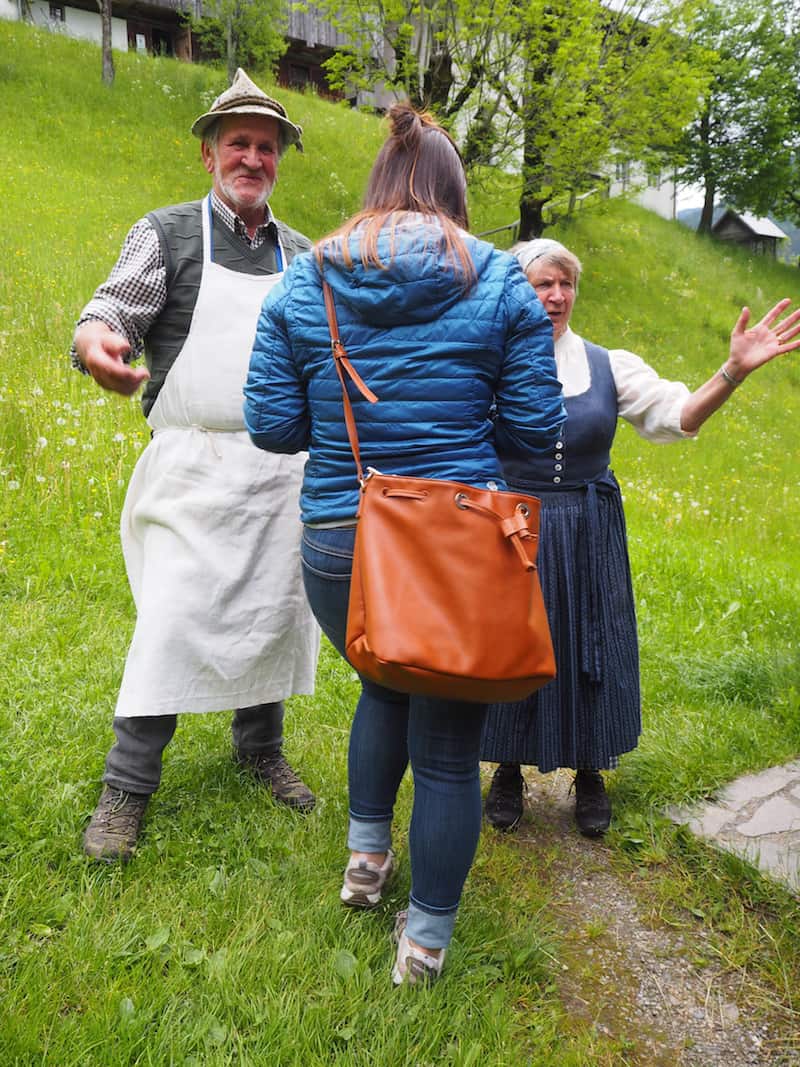
Original characters from the Lesachtal: Brigitte Luger (top right) welcoming Ingeborg (centre) with her husband Leopold Lugger, who is responsible for “making the dumplings”, whereas in turn, “I am doing the Internet!”, she says with pride!
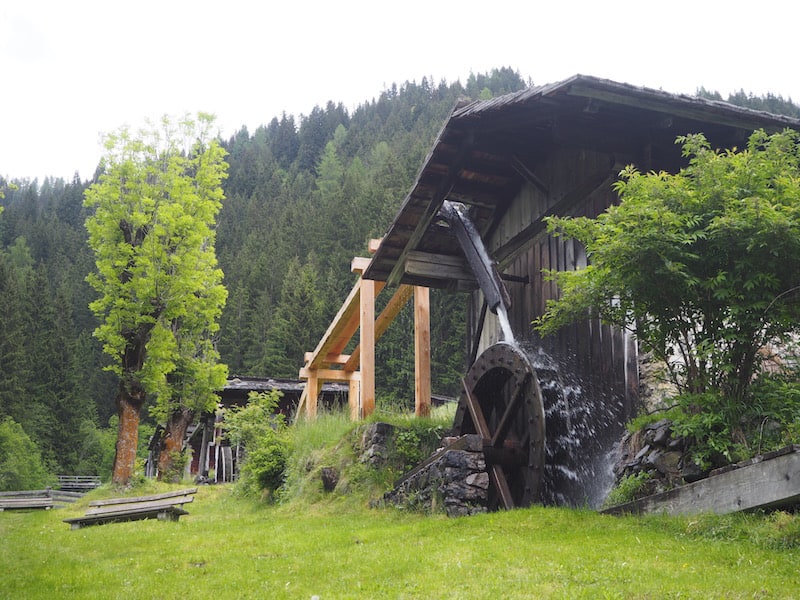
… Brigitte, who climbs these mountains in no time while simultaneously telling us more about the history and modern-day preservation of the ancient water mills in the Lesachtal valley.
Some 30 years ago, the small town Maria Luggau saw the building of a first farmer’s market house, made up of 45 Lesachtal farmers. “The Sails of Slow” have subsequently taken course towards the Lesachtal being known as the world’s first “Slow Food Travel” destination.
“Years ago, a journalist of the German ZEIT gave us this name: The ‘Sails of Slow’ in the Lesachtal valley”, Brigitte tells us. “We actually say, ‘Frisch auf!’ and ‘Glück zu!’, if work is calling. And yes, there is always something to do around here.” We nod towards her in agreement, looking at the surrounding mountain landscape: No industry, no farming machines, not even the Internet may cause the ‘sails of slow’ to move all too quickly. And this is something we can taste, too: Back home, I am still gently sipping my local “Maiwipferl” sirup, a sirup made from the young mountain spruce shoots hence a natural boost of energy. “Slow Food Travel“, a new age name for something the Lesachtal people have always felt: Eat, move, live your life with peace and reflection for what you do. Unpretentious. And strong.
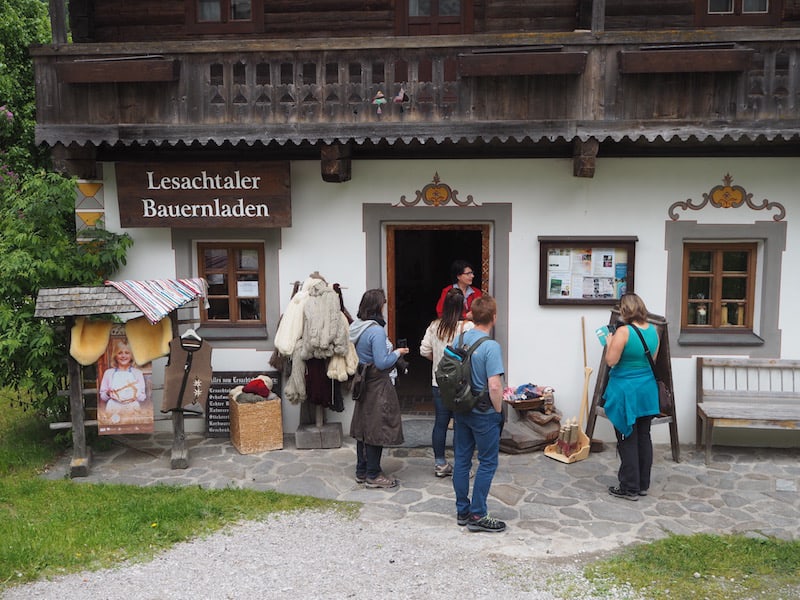
The epicentre of all things good and local in the Lesachtal valley: The farmer’s shop house with the same name.
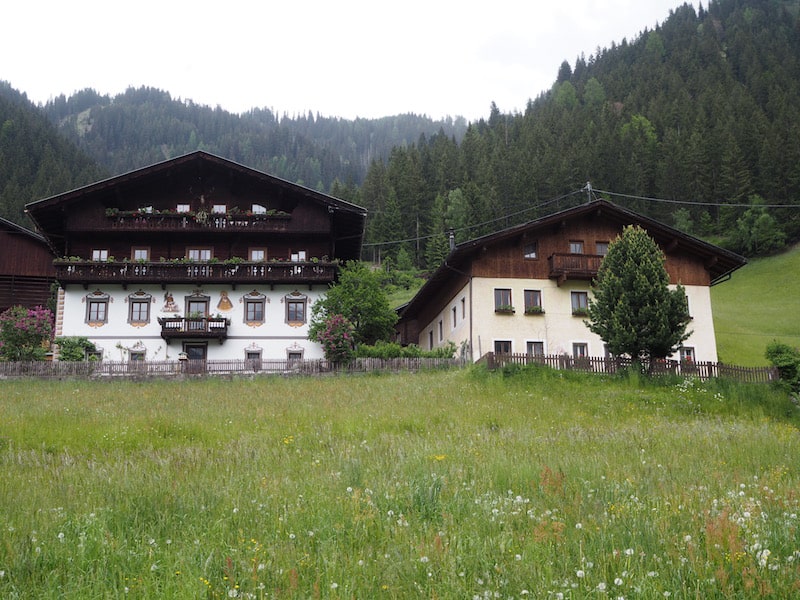
The top right house is where Brigitte Luger moved into as a young teacher in the valley, having indeed married the “next best man”: Her left-hand neighbour!
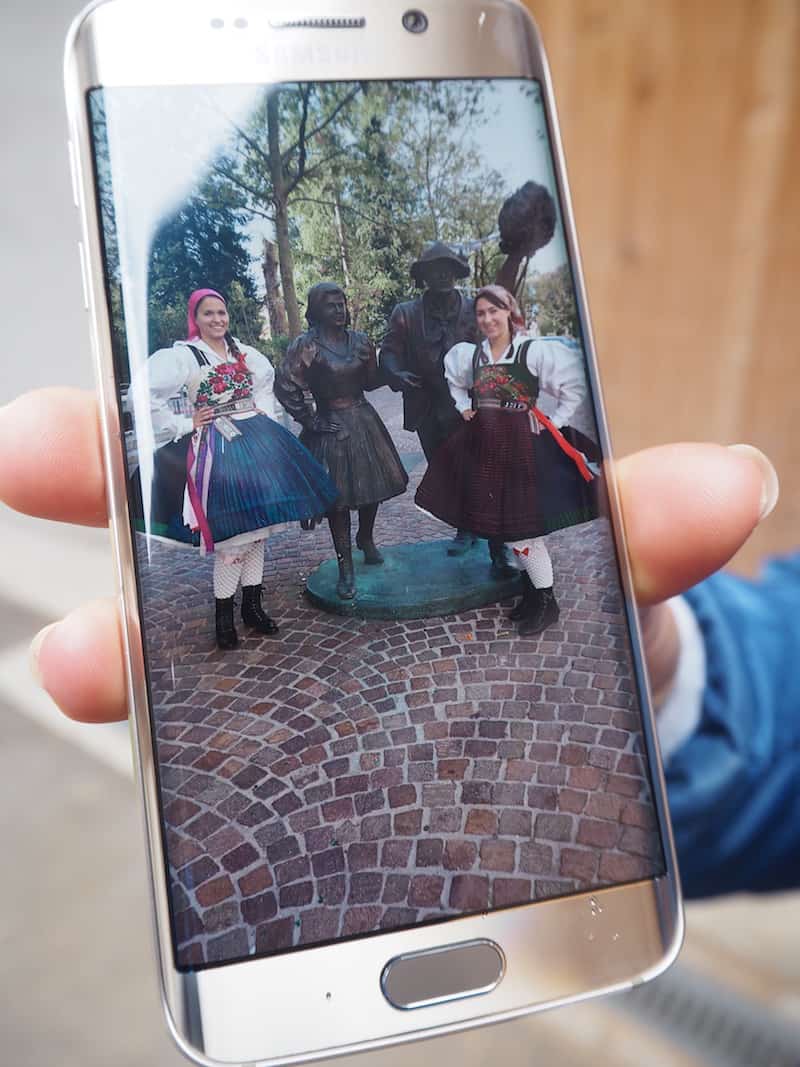
The only thing she continues to hold on to “from outside” is her traditional clothing, the “Gailtaler Tracht”, which Ingeborg shows to me on a picture taken last summer.
We continue our journey – slowly, as the road curves of the Lesachtal valley command! – all the way to the “Alpenhotel Wanderniki”, where Nikolaus Lanner and his mother Rosa Lanner lift the secrets to perfect local bread baking.
“Over there, well that’s already Italy”, Nikolaus Lanner smiles and points towards the high peaks to the south, covered in the last white specks of winter snow. “The name ‘Slow Food Alpe Adria’ as well as our recent award as a ‘Slow Food Travel‘ destination points to our good connection with our Italian neighbours, themselves the true masters and originators of the Slow Food concept. ‘Slow Food Travel’ really means being able to market slow food products as slow food experiences for travellers, such as herbal courses, baking bread, tasting workshops and many more. This is not new to us, but something we have always been fortunate to pass on to our guests”, Nikolaus emphasises. Hence also the modern-day pride of the Lesachtal people for the prestigious, international recognition of this award.
“Slow Food Alpe Adria” is also represented on Facebook and offers a good overview for those of you wishing to learn more about their creative foodie offers for exploring this singular “Slow Food Travel” destination in the south of Austria: http://kulinarik.nlw.at/de/slow-food-travel.
Let us first of all continue lifting the secret of the tasty Lesachtal bread. “Did you know, that it was a very curious Japanese lady, who almost pestered us with her research and arguments for getting the application of the Lesachtal Bread Baking all the way into the List of Intangible World Heritage of UNESCO?!” Incredible. We hang on the words of Nikolaus Lanner, floating in and out of the adjacent kitchen where his mother Rosa Lanner invites us to learn how to knead sour dough: My eyes light up as the journey takes on a creative twist and we are, once again, being creative travellers. 😀 Check this out.
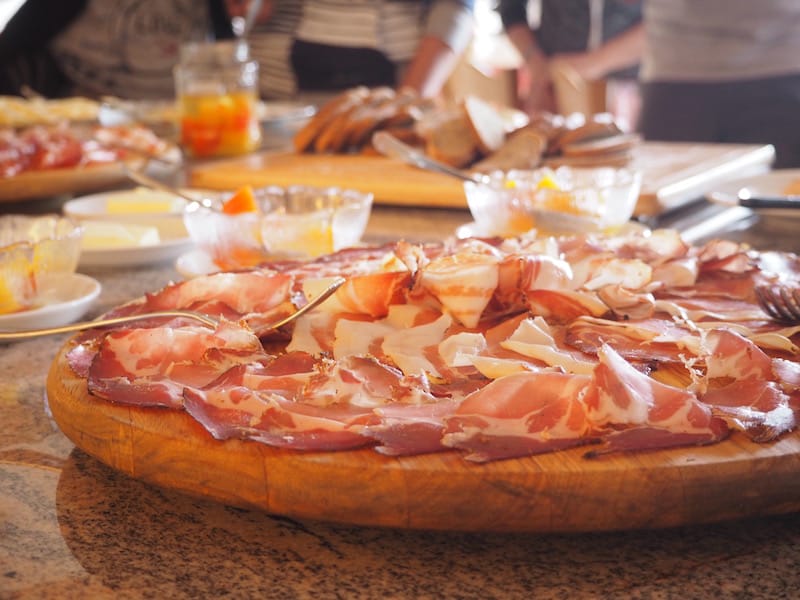
What is more, the local “Morende” (merienda), also takes its name from its tasty southern influencer sphere …
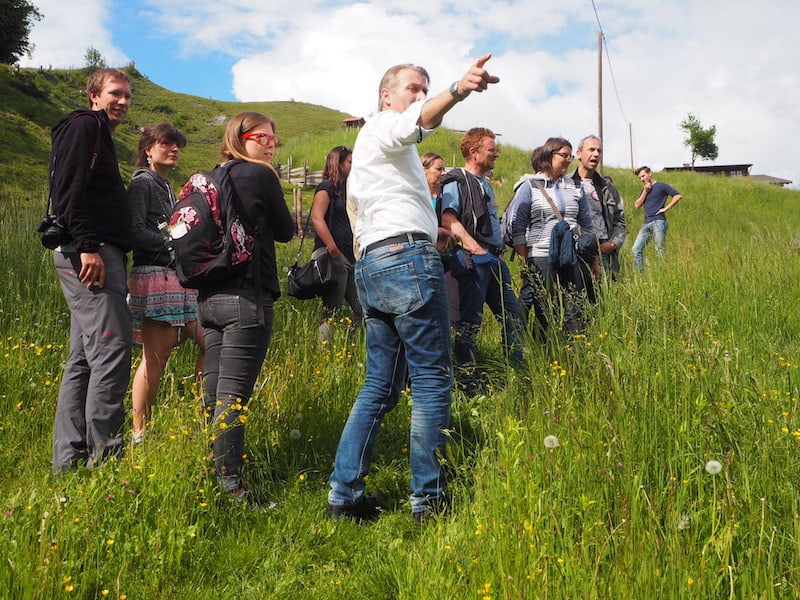
All the calories we enjoyed during our foodie experiences shall be burned hiking across the mountain landscape here …
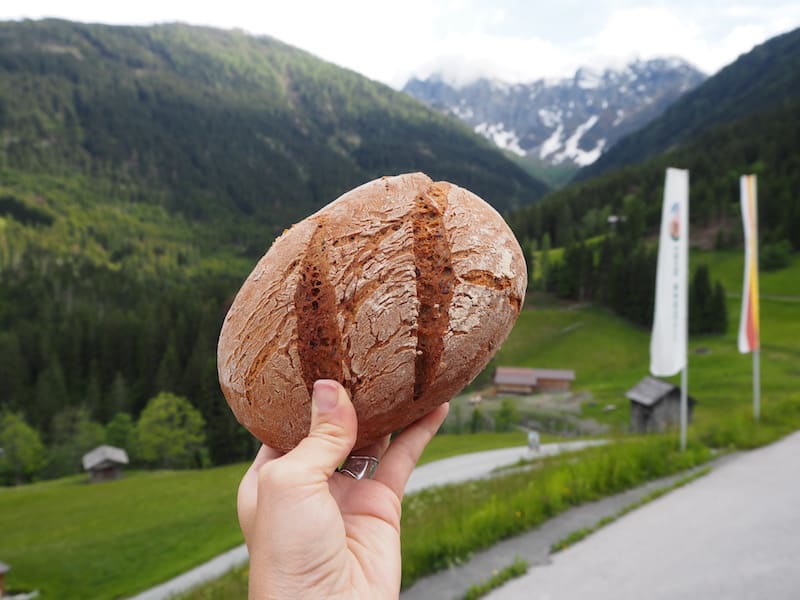
… with our home-made, Lesachtal bread – UNESCO World Heritage and a true original of a kind. Oh yeah!
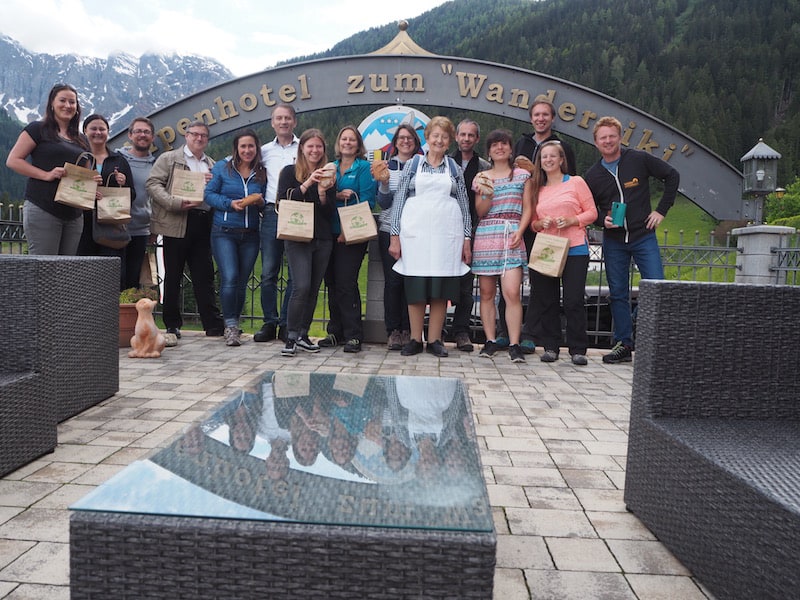
Thank you so much for such a happy travel day in the Carinthia Lesachtal valley. Read more about what my fellow travel writers have to say about the world’s first Slow Food Travel destination further on.
Here is what my friends and fellow travel writers have published about our trip:
- Corinna & Florian (TravelPins.at): “Slow Food Travel im Lesachtal: Ursprünglichkeit im naturbelassensten Tal der Alpen” & “Slow Food Travel im Gailtal: Zu Gast im köstlichsten Eck Kärntens“
- Gudrun Krinzinger (Reisebloggerin.at): “Slow Food Travel Alpe Adria” & “Der Mühlenweg in Maria Luggau“
- Angelika Mandler (Wiederunterwegs.com): “Als Vorkosterin unterwegs: Slow Food Travel in Kärnten“
- Anita Arneitz (AnitaAufReisen.at): “Wenn des, wos da is, zur Marke wird: Slow-Food-Travel im Gailtal und Lesachtal” & “Kulinarische Schätze in Kärnten erleben“
- Christina Leutner (CitySeaCountry.com): “(Vegan) Unterwegs in der weltweit 1. Slow Food Travel Region | Im köstlichsten Eck von Kärnten“
- Lucia Täubler (DieKremserinOnTheGo): “Traum einer Kunsthistorikerin: Maria Loggau” & “SlowFood Travel im Aufbruch: vom Feinsten“
- Melanie & Jürgen Schlotze (LifeTravellerz.com): “Auszeit in Kärnten – Ein Plädoyer für echtes Essen!“
Disclaimer: We have been invited by the Nassfeld-Lesachtal-Weissensee destination in order to explore “Carinthia’s tastiest corner” as part of our annual Austrian Travel Blogger Meet-up. All opinions are my own.
